#doherty design studio
Explore tagged Tumblr posts
Text
Ever-Growing List of Art & Design Websites I've Collected
Not the most extensive collection, but here are a few places I go to for inspiration that isn't Pinterest.
Philippe Apeloig - Graphic Design
Alliance Graphique Internatinale - Graphic Design
Nalani Malani - Visual Artist
Stills - Collection of stock photography, but actually good
Todd Hildo - Photography
Larry Sultan - Photography
Bobby Doherty - Photography
Erinn Springer - Photography
International Center of Photography, Collections - Large (mostly historical) photography collection
Hattie Newman - Design, product photography, short animations
Hatch Show Print Online Collections - archive of thousands of concert/event letterpress poster prints by Hatch Show Print
Lubalin 100 - Graphic Design
FISK - Design
Bráulio Amado - Art & Design
Maurizio Di Iorio - Photography
Anna Lomax - Product photography (and an absurd website design)
Charles Negre - Photography
Kenji Aoki - Abstract photography
Mini Title - Collection of fashion & editorial photography
Joss McKinley - Photography
Pidgin Doll - Art, custom dolls, fashion
The Met Collection - A digital collection of 490,000+ works of art (historical and contemporary) from the Metropolitan Museum of Art
Gagosian - Modern & contemporary art gallery
Typeroom - Whole lot of stuff about typefaces
Phyllis Shafer - Painting
Type Specimens - It's type specimens
Alex Ross - Painting (specifically comic book art)
Span - Chicago-based design studio
Dribbble - Like pinterest but it's all graphic design
Graphis - Gallery of Graphis International Awards & Publications winning work
WAY TO GO - A digital interactive experience. It's a little strange but I really like this one please check it out.
#if i remember to i'll update this as i find more sites#design sites#<- i WILL remember that tag I WILL
20 notes
·
View notes
Photo








"...conceived as an inner sanctum with elements of play and nostalgia, the calm and immersive space has a level of sophistication that appeals to adult buyers. Doherty made a conscious decision to make the store mannequin free, with minimal internal branding and signage. Champagne-hued powder coated fittings, rotating fixtures and custom cabinetry showcase miniature outfits, socks and shoes, with their scale ensuring that even the tiniest wares don’t get lost amongst the display. The narrow 55sqm space features a series of ‘material junctions’ within a palette of neutral and peach tones, designed to complement rather than distract from seasonal pieces. Porcelain pink textured plaster walls accentuate soft curves in the walls and joinery, blush ceramic tiles move in a circular pattern that continues from walls to floor, and custom curved railings create logical shopping routes around the interior..."
Marquise flagship store by Doherty Design Studio
#interiors#design#retail#store#shop#kids#Marquise#Malvern Central shopping centre#Doherty Design Studio#Melbourne#minimal#baby#texture#circular#tile#Ortolan
25 notes
·
View notes
Photo



Always a fan of Doherty Design Studio’s work but the Elwood Residence has to be one of my favourite projects to date. Gorgeous materials set against rich colours to create an impressive family home. 📷 Derek Swalwel #interiordesign #dohertydesignstudio #home #homedecor #decor
#interior design inspriation#interior design#Doherty design studio#home decor#luxury interior#design Home#home design
7 notes
·
View notes
Photo

https://studiodoherty.com.au/
#Studio Doherty#design#architecture#interior design#portfolio#gradient#typography#type#typeface#font#Rhymes Display#ABCSocial#2022#Week 45#website#web design#inspire#inspiration#happywebdesign
1 note
·
View note
Link
#cottages#residence#sandringham#sandringham residence#techne architecture#techne architecture + interior design#doherty design studio#doherty design#wowowhome#terrace
0 notes
Photo

Gloss House, Melbourne, Australia. Interior designed by Studio Doherty. Photo by Anson Smart.
3K notes
·
View notes
Text
Queen
Harry Doherty, Melody Maker, 18 September 1976
BRIAN MAY remembers Queen's first-ever free gig well. It was in London, five years ago, when the band invited 120 people along to a lecture theatre in Imperial College to hear them play. Orange juice and popcorn were served to the 80 or so who bothered to show their their faces and lend an ear.
Since that unremarkable debut, the capital has hosted many landmarks in Queen's well-planned climb to the top: the Imperial College gig in September, '75; the Rainbow in March, '74 (promoter Mel Bush convinced the band that they were big enough to sell out a concert there); two sell-out gigs at The Rainbow during November '75; and, last year, four shows at Hammersmith Odeon, The icing on the cake, to confirm that Queen have well and truly arrived, is on Saturday, when the band play in front of perhaps 200,000 at Hyde Park. They insist however, that the gig should not be interpreted as a "we're a big band now" gesture.
"I really hope it's not taken in that way," May said sincerely. "There must be other ways of doing that. You can play Wembley Stadium. I really hope that it's taken in the spirit that we're thinking of – just a nice thing to do. It's a dream to be able to do a free gig in Hyde Park, like the old days. It's as romantic as that.
"I don't think there's ever been a show like we're going to do in the Park. We're not going to hold back at all just because it's a free concert. It'll be the whole works. I hope it all fits together as a very nice and peaceful and enjoyable afternoon. It's a way of saying thank you. It's an adventure, fighting your way through 15 million miles of red tape. It's quite hilarious."
Had anyone mentioned to Queen four years ago the possibility that they would be topping a concert in Hyde Park, it's likely that the band members would not have batted an eyelid and would have accepted that it was most likely that they would eventually play a gig of such magnitude. They always knew they'd be a big band, and they were conscious, from the start, of the importance of creating a highly distinctive and personal sound that could be associated only with them.
QUEEN'S ROOTS lie in a band called Smile, which Brian May (guitar) and Roger Taylor (drums) played together in. When the singer, Tim Staffell, left to pursue a solo career, Freddie Mercury came along and persuaded them to form a band with him. After six months, John Deacon joined on bass and Queen was formed.
But had the life of rock and roll turned sour, the men in Queen could easily have returned to comfortable professions: Mercury, who designed Queen's logo, studied graphic design and illustration; May received a B.Sc in physics; Taylor graduated in biology; and Deacon won a first-class Honours degree in electronics.
The result of a studio trial at London's De Lane Lea studios was a demo tape that consisted of most of the songs that would appear on the first album, and EMI rushed to sign the band. A first single, 'Keep Yourself Alive', was released during October 1973, and flopped, and the band's gig as support act on a Mott The Hoople tour earned them meagre attention.
The second album, Queen II, however, broke the deadlock, and it included the first hit single, 'Seven Seas Of Rhye'. From then on, it was plain sailing for Queen.
They soon consolidated their success as a singles band with the snappy 'Killer Queen' and, as an albums band, with Sheer Heart Attack. Then last year, 'Bohemian Rhapsody', the six-minute opus with the operatic middle-section, gave them a much wider audience, who went out in force to sample the variety of wares on A Night At The Opera.
Now they're one of Britain's biggest bands.
Queen boast three strong vocalists – Freddie Mercury, Brian May and Roger Taylor. Mercury's lead vocal gives immediate identification, but behind that, Queen worked on achieving a notable harmony sound, with guidance from May. While Mercury's was the voice the public associated with, much of the success in the harmony vocals falls on to the incredible range of Taylor.
With their own identity intact, Queen refused to follow the accepted guidelines for success – working constantly on the club circuit – and instead played at parties for friends.
Taylor: "We didn't really want to get into that small club circuit. We all wanted to play big, big concerts, and didn't want to get stuck in that circuit for years and years, which is so easy to do, no matter how good you are."
On their four albums to date, Queen, Queen II, Sheer Heart Attack and A Night At The Opera, Queen have meticulously stamped their own sound, and earned enemies because they've been so fussy about their work.
Sheer Heart Attack and A Night At The Opera were particularly open to these attacks, but the days are past when Queen have been affected by such superficial judgments.
They go into the studio to get the best sound they possibly can, and adopt whatever means are at their considerable disposal to do so.
Queen's first album is still considered by many of their fans as their best. Like most debut discs, it's a work that encompasses the material that has been accumulated and played on the road for a few years before they got a chance to record, but many of the songs continue to form an integral part of the stage act.
'Keep Yourself Alive' and 'Liar' are classics of the band that'll probably never be dropped, while 'Doing All Right' and 'Son And Daughter' are contrasting rockers that could be dispensed with to make room for new material.
Overall, the album epitomised what Queen were about, not just a hard rock band, but a group of musicians well into melody, playing with a subtlety that many Seventies bands had ignored.
The music was a Seventies music, influenced and flavoured by the Sixties but structured and orchestrated (especially May's guitar work) in a fashion that owed little to the past.
May. "It had the youth and freshness which was never regained, because you're only young once. It had a lot of rough edges, a lot of bad playing, a lot of bad production, but obviously we didn't have that time to spend on it, which we did subsequently. It was all done in odd times when Trident Studios were available, so it sounds a bit bitty to me, and sound-wise, it's very patchy.
"But I would never think of going back and re-doing it or anything like that, because I think it has a freshness which we won't have again.
"I still like 'The Night Comes Down', which was done as a demo on our own at De Lane Lea Studios. It was the first time we'd been, as a group, in the studios together.
"I'd also mention 'My Fairy King' because that was a portent of things to come. That was an experimental thing. It was the beginning really of Fred playing the piano. He used to play for his own amusement but was very against putting a piano in the stage act. He didn't feel confident I suppose, and also felt that he wanted to move around, didn't want to be stuck playing a keyboard. The whole track was built around that and the backing track was done on the piano.
"The piano is gradually creeping in on the stage act now, which is good. It gives us so much more scope. From a thing like 'My Fairy King' came 'Black Queen', on the second album, and then 'Bohemian Rhapsody."
Of all four albums, Queen II remains firmly my favourite. A work that brimmed over with inventiveness, it was Queen at their most consistent and certainly at their most mature, musically. The songs were outstanding, complemented brilliantly on record by their instrumental skill. Brian May's role as guitarist on Queen II was not as guitar hero, but of one who worked totally with the group to give a strong, unique sound. And I don't think that Freddie Mercury has out-matched his Queen II performance on any other record.
The album had most of what is good about Queen. The songs reflected versatility in that department. From May came the classic in the moving 'Some Day One Day', and, of course, Mercury penned the first hit single, 'Seven Seas Of Rhye', while the two contributed the tracks that were to form the loose concept of the album, 'White Queen (As It Began)' (May) and 'The March Of The Black Queen' (Mercury), the battle between good and evil. Mercury also gave us the ravaging 'Ogre Battle', with its savage battle sequence.
To me, Queen II was an album which gave the band a direction, and to dabble adventurously with rock at such an early stage in their career was a move that displayed unusual confidence in their own ability. Strangely enough, the subsequent albums, Sheer Heart Attack and A Night At The Opera, have not portrayed the unity evident on Queen II.
May: "I must admit it's my favourite. It was the first time we've been able to – having got all those things out of our system on the first album – construct an album from a white sheet of paper.
"Everything that went on that album, we'd decided was right for the album out of a lot of songs we had around at the time. We really did try and shape it into a coherent whole, both musically and thematically.
"It really was, I think, the most considered album, because that album had been dreamed of right back before we made the first album.
"We knew we were getting all the stuff out of our systems so that we could concentrate on making an album and doing all these orchestral things that we'd always wanted to do with guitars and voices; doing the more fairly emotional songs and structured songs, which we couldn't even think of doing on stage but which we could do on album. All that was safe for the second album.
"The songs have a lot of meaning for us, and for our audience. That album crystallized what Queen was, I think, because, at that time, all the equipment we had to offer was on display in a way, the songwriting and the means of treating an album separate from a stage show. I think that set our direction more than anything else.
"Queen II was a point where all the adventurous ideas came out. There are seeds in Queen II of almost everything we've done since, but it was so compressed that all of it didn't come out unless you'd listened very closely."
If Queen II offered adventure, excitement and a definitive Queen sound, then Sheer Heart Attack is, in retrospect, the calm after the storm, an album which presented nothing startlingly new from the band, save a bunch of excellent, slickly produced songs.
Again, Freddie Mercury and Brian May dominated the songwriting, but the contributions of Roger Taylor ('Tenement Funster' – Taylor averages one rocker per album) and, for the first time, John Deacon (the soothing and poppy 'Misfire') widened the writing scope a little.
Mercury's songs veered from the smartness of 'Killer Queen' and 'Flick Of The Wrist' to the poignancy of slower numbers like 'Lily Of The Valley' and 'In The Lap Of The Gods'.
May's (contributions to the album, however, were more defined, for apart from one track, 'Dear Friends', his songs were mainly straight-ahead rockers, like 'Brighton Rock', 'Now I'm Here' and the slightly lesser-paced 'She Makes Me (Stormtrooper In Stilettos)'.
Sheer Heart Attack has been the only album on which May has stuck so closely to the hard rockers. He usually shows other sides of his character by writing well-structured, often complicated pieces.
May: "I do feel an affinity for the hard-rock bands who are not ashamed to do hard rock all night and do it incredibly well, bands like Status Quo. I think that if I wasn't doing what I'm doing now, that's what I'd be doing, and I'd gain a lot of satisfaction out of it.
"It's one of the hardest things in the world to be a really good rock band. To write really good rock songs is much harder than writing little things that all fit together well, so I suppose that's what is in my mind when I do those.
"I never like to see us get too far away from rock. I hope we're never too sophisticated, if that's the word, and that we'll always be able to just get out there and do some rock and roll.
"I think that would be a loss really, because it is not to be sneered at in any way, and to do that kind of thing is, as I say, as demanding as doing any of the complex things we do."
So Sheer Heart Attack was the straightest rock album Queen have yet recorded, strong but safe. Although it failed to present an experimental band, which the second album did, and although it worked within a much tighter framework, it was the album which virtually broke Queen as a major band world-wide.
May: "I regard Sheer Heart Attack as the most polished album, the most finished product, in the sense that we were playing better and the songs are all quite separate and treated in their own ways.
"It was done more for contrast than for continuity. The songs contrast but, at the same time, we weren't going out on any great limbs. Everything was a logical development from Queen II, although people didn't realise it at the time, but I think they do now."
May's right. Sheer Heart Attack was a neatly-packaged, concise rock work, unlike last year's release, A Night At The Opera, which displayed the spirit of adventure that marked Queen II.
Queen were well established when the time came to record their fourth album and they decided that they'd spend whatever period was necessary on finishing the new album.
They obviously went into the studios determined that the end product would portray a band much more diverse musically than any previous album, which it did.
There were typical Queen rockers in 'Death On Two Legs' and 'Sweet Lady' and typical Queen symphonies in the brilliant 'Prophet's Song' and 'Bohemian Rhapsody'. Songs like those are expected from Queen.
Not expected were the vaudevillean 'Lazing On A Sunday Afternoon', folky '39', jazzy 'Good Company' and middle-of-the-road love song, 'Love Of My Life'.
It was Queen putting themselves out on a limb again, saying "Look, we're not just a rock band we're something deeper than that. Here's the proof."
Pretentious though it might seem to say it, A Night At The Opera pulled them away from comparisons with heavy-metal giants, Led Zeppelin, and pushed them nearer to the Beatles. By becoming more diverse and writing a wider range of material. Queen had made themselves more accessible to a wider public.
A Night At The Opera, in my opinion, still had a few loose ends that weren't completely tied up, but the next album will probably see the full fruition of the ideas. For all intents and purposes, the album was to Queen what Sergeant Pepper was to the Beatles. It's opened so many unexplored areas that have to be followed – at the risk of losing original fans.
May: "Night At the Opera is really the conundrum, because I don't really think of it as a very commercial album. But it was the one which broke all the records. It's not nearly as easy-listening an album as Sheer Heart Attack. There's a lot of very uncomfortable things about it.
"We were deciding to branch out again. It was a conscious decision. Thinking that Sheer Heart Attack had been successful but safe, if you know what I mean, with A Night At The Opera we wanted to be adventurous again, but, at the same time, use the expertise which we'd learned in doing Sheer Heart Attack, and in doing all the millions of gigs in between.
"I'm pleased with it on the whole. It's got some very accessible things and also some very inaccessible things."
Queen's fascination for, and addiction to, recording studios, however, has taken its toll on the stage act. When they had finished recording A Night At The Opera, the band had two days to rehearse a stage act that'd be taken around the world.
The result has been that the stage act, good though it is, hasn't compared with recorded performances, which isn't surprising when nowhere near the same thought is put into making it original. The signs are that that approach will change this year.
May: "It has been quite a problem. What we've decided on for these few gigs at the moment is to do a half-way thing, with a few new songs thrown in.
"It's right for what we're doing because they're unusual gigs and a lot of people will see us who've never seen us before. It's right to present the complete history of what we have been. For the next tour – the one after these gigs – that'll be the one where we start re-structuring.
"In the case of the last tour, there was almost no rehearsal, because we went ahead and planned all the tour and worked ourselves to death to try and get the album finished and there were only two days between finishing the album and going on tour.
"But for the next tour, we'll rehearse. We're not going to make the same mistake again. Maybe we could have pulled out something special if we'd had more time to rehearse, so this time we're going to finish the album, make sure we have the right time for rehearsal and then go on tour."
QUEEN HAVE maintained that record performance and stage performance should be treated as totally separate entities, and that when they do one thing on record, there should be no obligation to repeat the feat in front of a live audience. Their stage act comes in the form of a compromise which works well.
The band adapt their songs as best they can for live work and, to bridge the gap between the perfect sound on record, they create an atmosphere around their set that involves their audience totally; so suddenly it does not matter to punters any more whether or not they play songs as on record.
The set at the Edinburgh the other week was further proof of Queen following this logic, when they took it a step further than last year's British tour.
For the duration of the set, dry ice is used to create a hazy mist on stage, so that the band are given a sort of obscure presence that captures the attention of onlookers.
Individually, songs are treated with whatever effects they need to transmit the feeling in them: smoke bombs in the battle sequence of 'Ogre Battle', dry ice to create a cloud effect on 'In The Lap Of The Gods'. Queen's stage act is a show in the true sense of the word.
However, the general criticism of this show is that Queen could do a lot more to recreate the sound of their records, and that the "separate entity" statement is a lame excuse, an easy cop-out to save them from a lot of bother. 10cc, people will say, go on stage and recreate their recorded sound, using tapes and whatever else is needed (an extra musician), quite comfortably. Why not Queen?
Taylor: "We could never what we do on record. We try to get as near as we can. We've never used any outside musicians either on stage or on record. It's not because of any strict policy, more due to personal satisfaction, by dragging it out of ourselves. We like experimenting with instruments and voices to get the effect on record that we want.
"We don't really try to recreate the sound on stage. I mean, you can't do a thing like 'Prophet's Song' like the record on stage. It's like a six-part harmony, and there's only three singers. There's no way that you can do it.
"Those are problems that we've got to solve ourselves, but if it sounds good, I don't think anybody can have cause for complaint: If it doesn't sound good, fair enough.
"All you can do is do either medium to the best of your ability at the time, and in the studio, you have so much time and so many different things, you have all the advantages – so why not make it as perfect as you can, even if it does make the stage act a harder thing to do?
"You say about using tapes, as 10cc do; well, I don't agree with that. When an audience comes to a concert, they come to hear music played live, not to hear backing tapes.
"All I can say is that we do the best we can within both mediums, and we're honest in both. I don't think that saying we treat recording and playing live as separate entities is a cop-out, I think that's honest. If we wanted to cop out we'd use lots of tapes on stage. The harmonies on stage are us singing, they're not tape-loops.
"When we go on stage, we want to make people enjoy themselves, to lift them. We're certainly not being political in any way at the moment. Perhaps a bit later on in all this, we'll want to say something real about the things that really matter, poverty or whatever, but at the moment, it's not the right time or place to say it.
"For one thing, we're not influential enough. It would only damage ourselves to do it and it wouldn't have much effect on people, and possibly we're not even mature enough to know how to say it yet.
"I hope, we say something on those lines after we've done something on purely musical lines and entertainment lines, which is what we're trying to do now.
"What John Lennon was trying to do after he left the Beatles was amazing. He was just being himself. Some of his statements might have been naive, especially in retrospect, but what a brave, honest way to do it. I've got unreachable heights of admiration for him."
Back to the stage act, and Queen involving their audience.
"What we want to do as soon as we start our set is to create an immediate atmosphere, if possible, of excitement, expectation and, ultimately, enjoyment. It's involvement and lifting them out of going home and listening to The Archers or watching So It Goes.
"That's what makes the live work as good as the recorded work. The rewards of working live are so much more immediate, because of the feedback.
"We really enjoy touring when we get into it, but we sell so many more records than we play to people that it's a much more far-reaching thing.
"Why the hell go on stage with backing tapes behind you and pretend you can do it like the record? I mean, you can give them something else. You can give them a visual spectacle, your live presence thing, and an excitement and an involvement that you don't get by listening to the record. I think we get pretty near on a lot of things.
"But the live show really is all about atmosphere. That's what rock and roll is all about, even though it's a show."
The flashness of Queen's live show is a mere extension of the individual personalities of the band. John Deacon, who always manages to dress in a comparatively sober fashion, Mercury and Taylor, in particular, and May on stage don distinctive uniforms.
Taylor "The stage show has always been a show, and always will be a little different. The emphasis is on 'the show.' People are paying money to come and see you, so we want to give them something that's pretty entertaining.
"You can do it with just music, but doing the visual and audio thing is much better. The Rolling Stones have always done that.
"All we ever did was reflect our personalities, and that's all we're doing now. It's just that we can afford to do it in a more sort of lavish way now, but hopefully without becoming too showbusiness, which is always a danger.
"I wouldn't like it to become showbusiness because, quite simply, it's still rock and roll. I think we could very easily go over the top now if we're not careful.
"People seem to think we don't try enough on stage, but when we come off we are totally wiped out, exhausted. A lot of them seem to resent the fact that it's entertaining.
"They say that we've got no sense of humour, which is ridiculous. How could we have no sense of humour with the things that Freddie is wearing these days? Nobody could wear those without having a sense of humour.
"People say that we've kept above our audience but I don't really think that's true. It is these days a bit, but only through necessity, because the organisation is so big. But I can remember the first two or three tours we did: we always used to try and let anybody who wanted to come into the dressing-room. But we can't do that now, obviously.
"We don't think we're above anybody. We might think we're a better band than most, but we don't consider ourselves to be above our audience."
In the past year, Queen have entered a class of their own. This rise coincided with the arrival of a new manager, John Reid, who'd already made his name by handling Elton John.
When he plotted the course for his first year with Queen, Reid decided that they should spend a substantial period cracking America wide open. The result was that the band are now one of the biggest rock acts in the States and, nine months after its release, A Night At The Opera is still in the charts there.
The feedback from the American success has opened many English eyes, and has given both Queen and Reid the confidence to stage the free show in Hyde Park.
May: "I'm staggered by the past year. I'm amazed. I suppose now we're conscious of having to live up to something, whereas before we weren't, so that's an additional strain. I will be happy as long as I feel that we do live up to people's opinion of us. If I think we justify it, then I'm happy. I'm always striving to see that we do.
"We're certainly not resting on our laurels in any way. We're always pushing on to new things. In a way, it would change us less than most people, because we've always had those attitudes really.
"We ALWAYS went for perfection in the face of financial disaster."
Retrieved from rocksbackpages.com
22 notes
·
View notes
Photo




(Mun Note: *slides in* BACK AT IT AGAIN WITH THE CHARACTER DESIGNS
So, this time, we have Dead Bird Studios and Subcon!
For the DBS kids, we have Molly “Mo” Garrison, Bailey, Aria Garrison, and Estelle Corvia! Molly and Aria are Grooves’s kids, Estelle is Conductor’s niece, and Bailey is...just there, though it’s agreed upon that Shifty is more or less their parent. Mo is the most outgoing of the group and has problems with volume control, Bailey indeed has no mouth and can’t talk but can eat (think Waddle Dees from Kirby where it just vanishes), Aria rollerskates everywhere and can do a sick heelie, and Estelle has problems with tone where everything she says comes out monotone.
For the DBS adults, we have Cornelius “Conductor” Doherty, Darius James “DJ Grooves” Garrison, and [REDACTED] “The Shapeshifter” “Shifty”. Conductor is married with 3 children, 6 grandchildren, and a shit ton of nieces and nephews from , with the main one he cares for being Estelle, Grooves is from a large family and is the youngest of the bunch, and Shifty has a strange past that they seem very on edge about talking about, which I encourage you to ask about <3.
For the Subcon kids, we only have [REDACTED] “Cryptid” and [REDACTED] “Rough Patch”. Not much is known about these two, but all Cryptid remembers is that they were royalty and that they and Rough Patch were always friends because Rough Patch was a noble.
For the Subcon adults, we only have [REDACTED] “The Snatcher” and former Queen Vanessa [REDACTED]. The Snatcher seems to greatly dislike both Cryptid and Rough Patch for unclear reason and Vanessa has no knowledge of the outside world beyond her manor, and she refuses to leave.
Next up is going to be Alpine Skyline and Nyakuza Metro!)
#original character#ahit original character#a hat in time original character#beta mustache girl#beta hat kid#ahit beta mustache girl#ahit beta hat kid#a hat in time beta mustache girl#a hat in time beta hat kid#a hat in time conductor#ahit conductor#a hat in time dj grooves#ahit dj grooves#dj grooves#a hat in time shapeshifter#ahit shapeshifter#ahit snatcher#a hat in time snatcher#snatcher#ahit queen vanessa#a hat in time queen vanessa#queen vanessa#a hat in time#ahit#ahit au#ahit oc#a hat in time oc
12 notes
·
View notes
Text
Charlie Watts, whose strong but unflashy drumming powered the Rolling Stones for over 50 years, died on Tuesday in London. He was 80.
His death, in a hospital, was announced by his publicist, Bernard Doherty. No other details were immediately provided.
The Rolling Stones announced earlier this month that Mr. Watts would not be a part of the band’s forthcoming “No Filter” tour of the United States after he had undergone an unspecified emergency medical procedure, which the band’s representatives said had been successful.
Reserved, dignified and dapper, Mr. Watts was never as flamboyant, either onstage or off, as most of his rock-star peers, let alone the Stones’ lead singer, Mick Jagger; he was content to be one of the finest rock drummers of his generation, playing with a jazz-inflected swing that made the band’s titanic success possible. As the Stones guitarist Keith Richards said in his 2010 autobiography, “Life,” “Charlie Watts has always been the bed that I lie on musically.”
While some rock drummers chased after volume and bombast, Mr. Watts defined his playing with subtlety, swing and a solid groove.“As much as Mick’s voice and Keith’s guitar, Charlie Watts’s snare sound is the Rolling Stones,” Bruce Springsteen wrote in an introduction to the 1991 edition of the drummer Max Weinberg’s book “The Big Beat.” “When Mick sings, ‘It’s only rock ’n’ roll but I like it,’ Charlie’s in back showing you why!”Charles Robert Watts was born in London on June 2, 1941. His mother, the former Lillian Charlotte Eaves, was a homemaker; his father, Charles Richard Watts, was in the Royal Air Force and, after World War II, became a truck driver for British Railways.Charlie’s first instrument was a banjo, but, baffled by the fingerings required to play it, he removed the neck and converted its body into a snare drum. He discovered jazz when he was 12 and soon became a fan of Miles Davis, Duke Ellington and Charles Mingus.By 1960, Mr. Watts had graduated from the Harrow School of Art and found work as a graphic artist for a London advertising agency. He wrote and illustrated “Ode to a Highflying Bird,” a children’s book about the jazz saxophonist Charlie Parker (although it was not published until 1965). In the evenings, he played drums with a variety of groups.
Most of them were jazz combos, but he was also invited to join Alexis Korner’s raucous rhythm-and-blues collective, Blues Incorporated. Mr. Watts declined the invitation because he was leaving England to work as a graphic designer in Scandinavia, but he joined the group when he returned a few months later.
The newly formed Rolling Stones (then called the Rollin’ Stones) knew they needed a good drummer but could not afford Mr. Watts, who was already drawing a regular salary from his various gigs. “We starved ourselves to pay for him!” Mr. Richards wrote. “Literally. We went shoplifting to get Charlie Watts.”In early 1963, when they could finally guarantee five pounds a week, Mr. Watts joined the band, completing the canonical lineup of Mr. Richards, Mr. Jagger, the guitarist Brian Jones, the bassist Bill Wyman and the pianist Ian Stewart. He moved in with his bandmates and immersed himself in Chicago blues records.In the wake of the Beatles’ success, the Rolling Stones quickly climbed from being an electric-blues specialty act to one of the biggest bands in the British Invasion of the 1960s. While Mr. Richards’s guitar riff defined the band’s most famous single, the 1965 chart-topper “(I Can’t Get No) Satisfaction,” Mr. Watts’s drum pattern was just as essential. He was relentless on “Paint It Black” (No. 1 in 1966), supple on “Ruby Tuesday” (No. 1 in 1967) and the master of a funky cowbell groove on “Honky Tonk Women” (No. 1 in 1969).
Mr. Watts was ambivalent about the fame that he achieved as a member of the group that has often been called “the world’s greatest rock ’n’ roll band.” As he said in the 2003 book “According to the Rolling Stones”: “I loved playing with Keith and the band — I still do — but I wasn’t interested in being a pop idol sitting there with girls screaming. It’s not the world I come from. It’s not what I wanted to be, and I still think it’s silly.”
As the Stones rolled through the years, Mr. Watts drew on his graphic-arts background to contribute to the design of the band’s stage sets, merchandise and album covers — he even contributed a comic strip to the back cover of their 1967 album “Between the Buttons.” While the Stones cultivated bad-boy images and indulged a collective appetite for debauchery, Mr. Watts mostly eschewed the sex and drugs. He clandestinely married Shirley Anne Shepherd, an art-school student and sculptor, in 1964.
On tour, he would go back to his hotel room alone; every night, he sketched his lodgings. “I’ve drawn every bed I’ve slept in on tour since 1967,” he told Rolling Stone magazine in 1996. “It’s a fantastic nonbook.”Similarly, while other members of the Stones battled for control of the band, Mr. Watts largely stayed out of the internal politics. As he told The Weekend Australian in 2014, “I’m usually mumbling in the background.”Mr. Jones, who considered himself the leader, was fired from the Stones in 1969 (and found dead in his swimming pool soon after). Mr. Jagger and Mr. Richards spent decades at loggerheads, sometimes making albums without being in the studio at the same time. Mr. Watts was happy to work with either, or both.
“Never call me your drummer again,” he told Mr. Jagger, before grabbing him by the lapel and delivering a right hook. Mr. Richards said he narrowly saved Mr. Jagger from falling out a window into an Amsterdam canal.“It’s not something I’m proud of doing, and if I hadn’t been drinking I would never have done it,” Mr. Watts said in 2003. “The bottom line is, don’t annoy me.”At the time, Mr. Watts was in the early stages of a midlife crisis that manifested itself as a two-year bender. Just as the other Stones were settling into moderation in their 40s, he got hooked on amphetamines and heroin, nearly destroying his marriage. After passing out in a recording studio and breaking his ankle when he fell down a staircase, he quit, cold turkey.Mr. Watts and his wife had a daughter, Seraphina, in 1968 and, after spending some time in France as tax exiles, relocated to a farm in southwestern England. There they bred prizewinning Arabian horses, gradually expanding their stud farm to over 250 horses on 700 acres of land. Information on his survivors was not immediately available. Mr. Doherty, the publicist, said Mr. Watts had “passed away peacefully” in the hospital “surrounded by his family.”
Eventually the Stones settled into a cycle of releasing an album every four years, followed by an extremely lucrative world tour. (They grossed over a half-billion dollars between 2005 and 2007 on their “Bigger Bang” tour.)But Mr. Watts’s true love remained jazz, and he would fill the time between those tours with jazz groups of various sizes — the Charlie Watts Quintet, the Charlie Watts Tentet, the Charlie Watts Orchestra. Soon enough, though, he would be back on the road with the Stones, playing in sold-out arenas and sketching beds in empty hotel rooms.He was not slowed down by old age, or by a bout with throat cancer in 2004. In 2016, the drummer Lars Ulrich of Metallica told Billboard that since he wanted to keep playing into his 70s, he looked to Mr. Watts as his role model. “The only road map is Charlie Watts,” he said.Through it all, Mr. Watts kept on keeping time on a simple four-piece drum kit, anchoring the spectacle of the Rolling Stones.“I’ve always wanted to be a drummer,” he told Rolling Stone in 1996, adding that during arena rock shows, he imagined a more intimate setting. “I’ve always had this illusion of being in the Blue Note or Birdland with Charlie Parker in front of me. It didn’t sound like that, but that was the illusion I had.”
Phroyd
62 notes
·
View notes
Note
Hello there :) Don't know if you've seen this already, but apparently Peter has a new book out in June next year called "A Likely Lad" written with Simon SPence, which seems to be some kind of autobiography :)
Hello! Oh wow I hadn’t heard that. That’s cool! I had a look around and and here is the rundown:
Peter Doherty is the last of the great rock 'n' roll stories - maybe even the best ever rock 'n' roll story. Since his band The Libertines rose to international fame, he has proved endlessly fascinating, the subject of numerous books, documentaries, magazine articles, front-page newspaper headlines and TV news reports. This, for the first time, is his version of his story. As an icon Doherty is on a par with the early Rolling Stones and Sid Vicious as a bad boy and public enemy. To his hundreds of thousands of devoted fans he is a cult hero, a modern-day rebel Rimbaud. He divides critics - for every award and accolade (Greatest Hero of Rock or No 1 on the Cool List) there is a scathing review, an objection almost to his very being. Musically, there is no doubt he has defined the past twenty years of British rock 'n' roll with his sound, words, attitude, lifestyle, aesthetic and early buccaneering use of the internet to communicate with fans directly. It is also true that too often his talents as a songwriter and performer have been over-looked amid the whirlwind of controversy and scandal that has tailed him since his first spell in prison in 2003. Hard drugs, deaths, tiny gigs on the hoof, huge stadium shows, collaborations, obliterations, gangsters and groupies - Doherty has led a life of huge highs and incredible lows. It is all here: the music; the friendships; the distractions (exhibitions of blood paintings, modelling for famous fashion designers, lead roles in esoteric French films); deaths and self-destruction (he admits working as a rent boy). We are inside mansions, decadent parties, the jailhouse, the studio, in crack dens, at home (Doherty has two children) and, of course, in bed. With his trademark wit and humour, Doherty reflects on his era-defining relationship with supermodel Kate Moss and the other significant women (and men) in his life. Doherty also talks poetry, Paris (where he spends much time), philosophy, books, politics, football (QPR), cars, managers, the music business and his key influences (from Hancock to Baudelaire). There is humour, warmth, insight, baleful reflection and a defiant sense of triumph. There is harrowing detail and acknowledgement of the damage hard drugs have done - the endless litany of misdemeanours such as drink-driving, car theft, possession of heroin, crack and ketamine, robbery, hit-and-run and blackmail. Doherty's description of multiple stretches in jail, attempts at rehab, painful relapses, gruesome hospital emergencies, and estrangement from his family are eye-wateringly candid and free from self-pity. In a remarkable section, Doherty ruminates on his recent rapprochement with his father, a former Major in the British Army, after a decades-long wall of silence.
14 notes
·
View notes
Text

RIP, Charlie Watts of The Rolling Stones. @RollingStones #charliewatts
Photo: Jeff Bliss
From The Guardian:
Rolling Stones drummer Charlie Watts dies aged 80
Musician’s publicist says he died peacefully in a London hospital surrounded by his family
Charlie Watts, the Rolling Stones drummer who propelled the band’s sound for nearly 60 years, has died aged 80.
A statement from his London publicist, Bernard Doherty, to the PA news agency said: “It is with immense sadness that we announce the death of our beloved Charlie Watts.
“He passed away peacefully in a London hospital earlier today surrounded by his family. Charlie was a cherished husband, father and grandfather and also, as a member of the Rolling Stones, one of the greatest drummers of his generation.”
Earlier this month, it was announced that Watts was to miss the band’s forthcoming US tour as he recovered from an unspecified medical procedure.
With his limber stance, keen knowledge of jazz, and unruffled ability to make songs swing even when keeping the strictest time, Watts is regarded as one of the greatest – and most stylish – rock drummers of all time.
Among those paying tribute was Ringo Starr, drummer with friendly rivals the Beatles, who wrote: “God bless Charlie Watts we’re going to miss you man peace and love to the family”.
Born in 1941, Watts was raised in Wembley, north-west London, and later the suburb of Kingsbury. His first musical love was US jazz from the swing and bebop eras, drumming along with jazz records after getting his first kit in his mid-teens. He later attended art school and became a graphic designer after graduation, playing in local bands on the side.
In 1962 he joined Blues Incorporated, a linchpin band in the British rhythm and blues scene led by Alexis Korner, playing alongside Cream bassist Jack Bruce and more in a fluid lineup. Through Korner he met Brian Jones, who would play at Blues Incorporated gigs, and they found regular fans in Mick Jagger and Keith Richards, who also ended up playing with the group. Jagger and Richards soon formed their own group, the Rolling Stones, with Watts joining in 1963.
“ It was another band to join, I was in about three of them,” Watts later said; he began living informally with the group. “We’d rehearse a lot. They – Brian and Keith – never went to work, so we played records all day, in that rather bohemian life. Mick was at university. But he paid the rent.”
Always using a straightforward four-drum setup – positively minimalist compared with the multi-instrument setups favoured by many rock groups – he gave the Rolling Stones propulsive, unfussy backbeats on every one of their studio albums, beginning with their self-titled 1964 debut. “I don’t like drum solos,” he once said. “I admire some people that do them, but generally I prefer drummers playing with the band. The challenge with rock’n’roll is the regularity of it. My thing is to make it a dance sound – it should swing and bounce.”
Weathering the death of Jones in 1969, the band went on to epitomise stadium rock’n’roll – though Watts regarded them as a “blues band” – scoring 13 UK No 1 albums including the critically adored likes of Let It Bleed, Sticky Fingers and Exile on Main Street. Watts helped to power their high-energy world tours, playing with the group well into his mid-70s – his final tour was the two-year No Filter tour, beginning in 2017.
Alongside the Rolling Stones, Watts also played jazz in a series of groups over the years, including his own quintet and tentet, and Rocket 88, reuniting with Korner and Bruce in the late 1970s to play boogie-woogie.
In the mid-1980s, he was bandleader in the Charlie Watts Orchestra, a gargantuan unit playing big band jazz that toured the world, and released a live album, The Charlie Watts Orchestra Live at Fulham Town Hall. “Mick really likes it,” he said of his Rolling Stones bandmates in 1987. “Keith’s very annoyed, though, that we don’t have a guitar player. He thinks it’s a sacrilege. But I just told him that with 33 guys, it’s hard enough to fit everyone’s solos in as it is.”
Unlike the colourful romantic histories of his Rolling Stones bandmates, Watts was stable in his personal life: he married his wife Shirley Ann Shepherd in 1964, and they remained together until his death. He is also survived by their daughter, Seraphina. Although known as a more temperate rock star compared with the rest of the Stones, Watts struggled with alcohol, amphetamines and heroin use for a period in the 1980s. “I think it was a midlife crisis,” he told the Observer in 2000. “All I know is that I became totally another person around 1983 and came out of it about 1986. I nearly lost my wife and everything over my behaviour … I wasn’t that badly affected, I wasn’t a junkie, but giving up [drugs] was very, very hard.” He said that falling down the steps of his cellar drunk while fetching another bottle of wine “really brought it home to me how far down I’d gone. I just stopped everything – drinking, smoking, taking drugs, everything, all at once.”
In 2004, he was diagnosed with throat cancer, but recovered after a course of radiotherapy.
After undergoing emergency surgery last month and announcing he would not appear on tour – he was to be replaced by Steve Jordan – he commented in a typically droll manner: “For once my timing has been a little off”. The procedure had been announced as “completely successful” with Watts needing “proper rest and recuperation”.
Watts’ final release with the band was Living in a Ghost Town, a 2020 single taken from a studio album they had been planning.
16 notes
·
View notes
Photo

This is soooo cool. The studio where Pink Floyd used to record has been converted. Architects worked with former Pink Floyd studio manager and her musician husband to transform the iconic Britannia Row Studios into two stunning industrial style flats. Clearly, I need one.


The existing studio space was comprised of a two story recording studio with live rooms, vocal booths, drum rooms and production suites. The new London property, which has been divided in two by a concrete staircase, has exposed brick walls throughout and is designed to remain true to its rock and roll history.

Some of the biggest names in music history recorded at the studios from Björk, James Blunt, Kate Bush and Pete Doherty to Joy Division, Manic Street Preachers, Kylie, New Order, Pulp, Snowpatrol, Westlife, Supergrass and original founders Pink Floyd themselves.

The renovation entailed stripping out the 1ft. thick sound-proofed interior walls back to the bare brick. Exposed pipes and concrete floors were restored and retained as part of the industrial look.

Some elements, like sliding glass doors were reclaimed.

Lovely view of the cozy living room from the kitchen.

In the pass-thru to the bedroom, there’s storage and a pocket door to close it off from the rest of the apt.

White architectural features break up the brick walls and add interest.

A sliding barn door opens to the bath.

There’s a built-in armoire for clothing and a nice place beside it, perfect for a desk.
https://homeworlddesign.com/historic-pink-floyd-recording-studios-transformed-into-two-london-flats/
56 notes
·
View notes
Text
Lookin’ for Trouble: Censorship and THE FRENCH LINE By Jessica Pickens
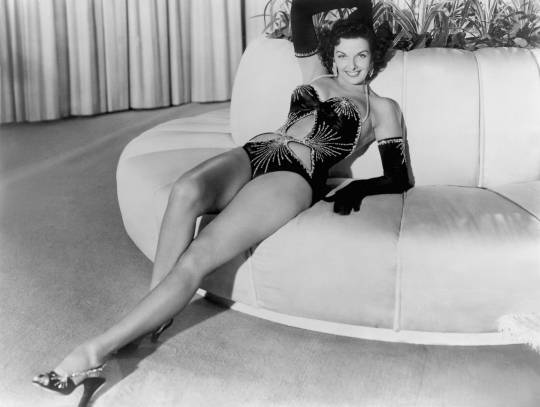
Today, writers have free range to include nearly anything they want in a TV show or film — from nudity to profanity. But there was a time in Hollywood (1934 to 1968) where the Motion Picture Production Code limited and policed what was on the screen. This set of moral guidelines included rules such as: No cursing, no suggesting nudity, no making law enforcement or religion look foolish, avoid excessive kissing. However, one 1953 RKO musical didn’t make it past the censors: THE FRENCH LINE.
The plot is fairly innocuous. Oil heiress Mary Carson (Jane Russell) is frustrated that she can’t find love — men are intimidated by her millions. After being jilted once again days before her wedding, she sets sail for France, and Mary poses as model Myrtle Brown while the real Myrtle (Joyce Mackenzie) pretends to be Mary. When Mary falls for Frenchman Pierre DuQuesne (Gilbert Roland), she puts him to the test to prove that someone can fall in love with her personality and not her dollars.
The film is a musical retelling of THE RICHEST GIRL IN THE WORLD (‘34), starring Miriam Hopkins, Fay Wray and Joel McCrea, with a screenplay by Norman Krasna. Before RKO’s 1953 version, the story was retold again by the studio in 1944 as BRIDE BY MISTAKE starring Laraine Day, Marsha Hunt and Alan Marshal.

While the story is harmless, the censorship issue was with Howard Hughes’s use of THE FRENCH LINE’s star, Jane Russell. Hughes was eager to star Russell in a musical after seeing GENTLEMEN PREFER BLONDES (’53), according to Jane Russell’s My Path and My Detours: An Autobiography. Russell was known for her physical attributes, and Howard Hughes decided to enhance her image in THE FRENCH LINE by shooting the film in 3D.
“J.R. in 3D, need we say more?” touts the film’s tag line.
At the start of the film, Russell performs an innocent striptease while hidden behind furniture before getting into a bubble bath. Some costumes draw attention to her chest with sequins or lace. Even Russell’s gal pal in the film, played by Mary McCarty, calls her “chesty” as a nickname in one scene.

But the final straw for censors was her number “Lookin’ for Trouble,” which occurs in the last 10 minutes of the film. Originally, Hughes had costume designer Michael Woulfe create a silver-beaded bikini for Russell to wear while performing the number. “At that time, bikinis were only worn by a few naughty girls in the south of France. I stood before my horrified camera crew, feeling very naked,” Russell wrote in her autobiography.
Russell argued with Hughes and Woulfe, refusing to film or rehearse until a one-piece costume was created. A costume was designed to please both Russell and Hughes. The outcome was a black one-piece with three holes cut below and above the waste. “The only problem (with the number), as I saw it, was that it was never made clear in the story that the millionairess did the naughty number to get even with her fellah, to make him mad,” Russell wrote. A motivation scene was filmed, but never used. Russell said she did the number as tongue-in-cheek and there would have been nothing wrong with it had there been a motive.
However, film censor Joseph I. Breen’s office found plenty wrong with the musical number and the film. THE FRENCH LINE included costumes “designed to give a bosom peep-show beyond even extreme décolletage and far beyond anything acceptable under the Production Code,” according to the book Hollywood's Censor: Joseph I. Breen and the Production Code Administration by Thomas Doherty. Hughes couldn’t get a seal of approval from censors for the film. So, he released the film without a Production Code seal, which was the first time a film released by a major studio distributed without a seal, according to Doherty’s book.

THE FRENCH LINE and Russell were both condemned by various religious groups. “That girl’s not Christian,” said Dr. Evans of Hollywood Presbyterian Church, according to Russell’s book. The film was also condemned by the Legion of Decency and the Catholic Church. Archbishop Joseph Elmer Ritter said that no Catholic “with a clear conscience” should attend such an “immoral movie,” according to Banned in Kansas: Motion Picture Censorship, 1915-1966 by Gerald R. Butters.
Russell wrote that after it all ended, she and Hughes had a talk about censorship and he promised that she would never be in the middle of a censorship problem again as long as she never told anyone about the discussion.
#The French Line#Jane Russell#pre-code#classic hollywood#howard hughes#TCM#Turner Classic Movies#Jessica Pickens
156 notes
·
View notes
Text







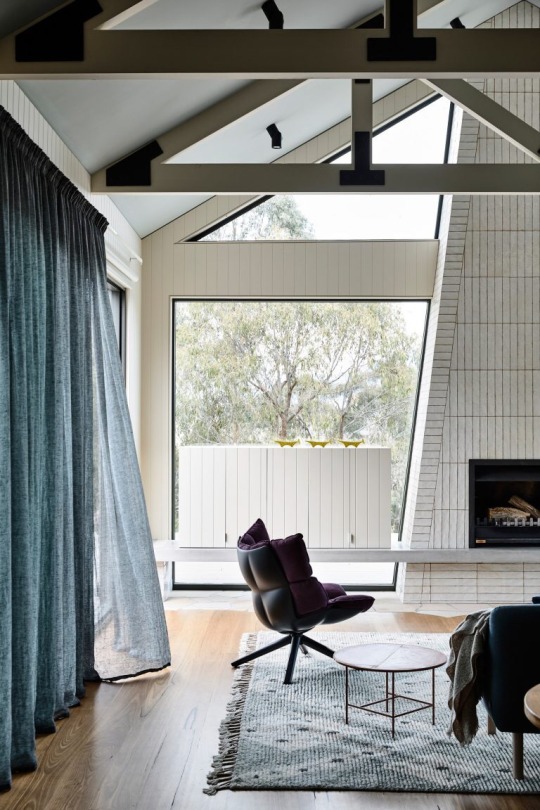


Thornton Residence, Thornton, VIC, Australia by Doherty Design Studio & Detail 9 Architects | 📷 Derek Swalwell
#interior design#architecture#interiors#interior#interiordesign#decoration#design#decor#furniture#fineinteriors
574 notes
·
View notes
Link
*Amy Roberts is nominated for an Emmy in Outstanding Period Costumes for episode 10 Cri de Coeur.
The third season of The Crown, Netflix’s lavish, semi-fictionalized series about Queen Elizabeth II and her family, sees the monarch, Prince Philip and Princess Margaret entering middle age. Claire Foy hands off the role of Elizabeth to Olivia Colman, with Helena Bonham-Carter and Tobias Menzies joining the cast as her sister and husband. Kicking off in 1964 with a Soviet spy scandal ripped from the headlines and ending with the Queen’s 1977 Silver Jubilee, this season of The Crown also covers events some viewers will remember firsthand. Though paparazzi activity hints that the show’s fans are ardently awaiting Princess Diana’s season four entry (and luckily for them, filming wrapped about a week before coronavirus lockdowns were instated), season three is a nuanced historical and personal portrait of the family making their way through a politically pivotal era, from Margaret’s charming of President Lyndon B. Johnson to Prince Charles’s investiture in Wales.
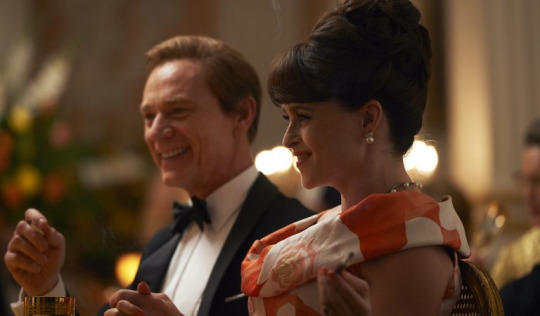
The season also spans one of the 20th century’s most distinct time periods in terms of fashion. Working with a team that can number from 45 people up to 130 on the biggest shooting days, costume designer Amy Roberts joined The Crown for seasons three and four, taking over from Jane Petrie and previously, Michele Clapton. Roberts balances the royal family’s distinctly staid aesthetic with glimpses of the styles of the era, seen on younger characters like Princess Anne (Erin Doherty) and Roddy Llewellyn (Harry Treadaway), Margaret’s youthful, long-term affair.
Queen Elizabeth, however, is still at the crux of every episode, and for the monarch, Roberts embraces an early version of the vivid colors and matching ensembles that have come to dominate her personal style. We spoke with the costume designer about building imagined looks versus hewing to history, her personal style favorites from the season, and the new hues that set the tone for the Queen’s next half-century of outfits.

How do you decide whether to put together new looks or look to history for costuming major, well-documented events, like the Queen’s Jubilee, Prince Charles’s investiture, or the tragedy of Aberfan?
I think it’s an emotional decision. And those big events, particularly Aberfan, it doesn’t make sense to veer away from it. Often, some generations remember it very clearly, and it would seem arrogant of me to even think, oh, I’m going to change history. That’s my strong feeling. Those are a few very key, important moments, but there is so much on The Crown where you don’t know what they wore, you don’t know what they said, you don’t know what went on, so there are plenty of other times when you can let your imagination run free or be more filmic. That’s the joy of The Crown.
Queen Elizabeth has such an interesting style legacy because you have people who think she’s the most fashionable woman in the world, as well as a camp that finds her rather dowdy. What’s your opinion, and what guides you as you’re designing for her?
Well, I was one of those people who thought the Queen’s dress-sense-look-style was not of great interest or groundbreaking. But the more I looked at her, not just my period of time — the 60s through the early 90s, up through season four — you realize she’s actually amazing. You can see where a lot of designers have drawn inspiration, whether it’s Dolce and Gabbana or Vivienne Westwood. So I was really surprised. And the color choices, they’re absolutely extraordinary, even in the present day. I know she dresses to be seen in vivid colors, but she owns it. You see her privately at Balmoral, maybe in her kilt and her twin set and some scarves, and she looks amazing, with a Burberry mac on. There are some really weird ones, like the investiture, but they’re always interesting.

The royal family has an aesthetic unto itself, which isn’t necessarily representative of the era. There are so many fashion hallmarks of the 1960s and 70s in particular, which are not things the Queen would ever wear. Was it difficult to conceive of costumes that illustrate the time period while still being accurate to the family?
The first two seasons, which are absolutely beautiful, had the aesthetic of the 30s, 40s, and 50s color palette. I suppose in a way what opened the door for us in this era was color. We have a huge wall in our studio where we put up lots of images, each member of the royal family’s journey, in a huge chart. And I think what everybody realized was it’s the color — those sugar pinks, lemon, tangerines, and turquoises — suddenly you’ve got that, which you hadn’t got before. I think Jane [Petrie] slightly touched on it towards the end of season two, but we could really go for that, those more synthetic tones that heralded in the 60s and 70s, those post-war colors and patterns.
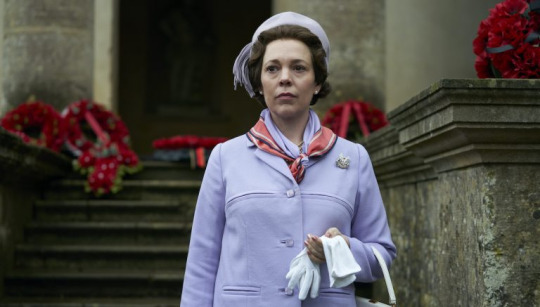
And as we get closer to modernity, can you buy and rent costumes for supporting characters, or is everything purpose-built?
All the principals are designed and made, but what we could start to do in this era was introduce a little bit of buying, for Princess Anne and some of the important smaller parts. The budget’s fantastic, but you can’t afford to make everyone, nor do you have the time. It’s got to be the best quality, obviously, but you can source the 60s and 70s clothes pretty easily. We didn’t do that at all for the Queen — maybe an old Burberry mac, actually — but for Princess Anne, we introduced a few buys, some knitwear, and we found some fantastic jeans. And obviously, for the crowd, that is all sourced and hired from costume houses in England, a little bit in Spain, and we used a fantastic place in Paris.
The real royals wear fur. How do you deal with that for the show?
Quite rightly, Netflix and Left Bank have a policy of no fresh fur. But you can use, and we would use, fur from the late 50s. Margaret and the Queen do occasionally wear fur coats, much to the horror particularly of Olivia Colman. They [Colman and Bonham-Carter] don’t love it at all. I have to stress that: there’s no enjoyment to them wearing fur coats. But you might be thinking about Charles’s investiture robe. There’s a good story there. That had to be made from scratch. The lining of that cloak is ermine. That was problematic because we could only use old ermine. They came from all over, the color had to be matched, they had to be cleaned and stretched by a furrier, and there aren’t many furriers anymore. But they had to be a certain date, none of it was fresh fur. It’s absolutely forbidden. So that took a long time to source, do it properly, and within strict guidelines. And it’s hard for actors, sometimes. They want a sign saying “this isn’t me, I don’t approve!” We only used fur coats when it was absolutely needed, and the odd fur stoles, but we steered away from it as much as possible.
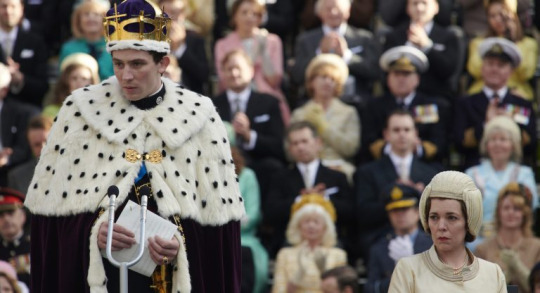
Did you have a favorite character to dress in season three?
I always say this, but I loved doing Princess Alice of Greece, Prince Philip’s mother, the nun [Jane Lapotaire]. Because suddenly, after all that pomp, silk, and patterns and color, you do something completely different, and pure and simple. I don’t know, I just loved that beacon in the midst of it all. And I loved doing Wallis Simpson; her clothes and style were just very modern. The palette we went for was a personal favorite of mine. So Princess Alice and Wallis Simpson — two extremes, really, both as women and as looks.
#olivia colman#tobias menzies#helena bonham carter#the crown#ben daniels#josh o'connor#erin doherty#jane lapotaire#geraldine chaplin#charles edwards#jason watkins#costume design#the crown netflix
17 notes
·
View notes
